Introduction
- Regular contact to customers is vital in building and sustaining customer relationships.
- Technological innovations are resulting into changes in marketing processes.
- These technologies include televisions and electronic media, particularly the Web.
- Consequently, websites and online advertising are increasingly becoming important, especially among new companies.
- Various marketing concepts determine the design of websites for B2B, B2C,C2C and B2E businesses.
- They include: the size of the business, the nature of the products and the target customers.
- Online advertisements affect the success of online marketing by increasing the performance metrics.
- However, managers must be involved at each stage of the process and must understand the benefits and cost of such initiatives.

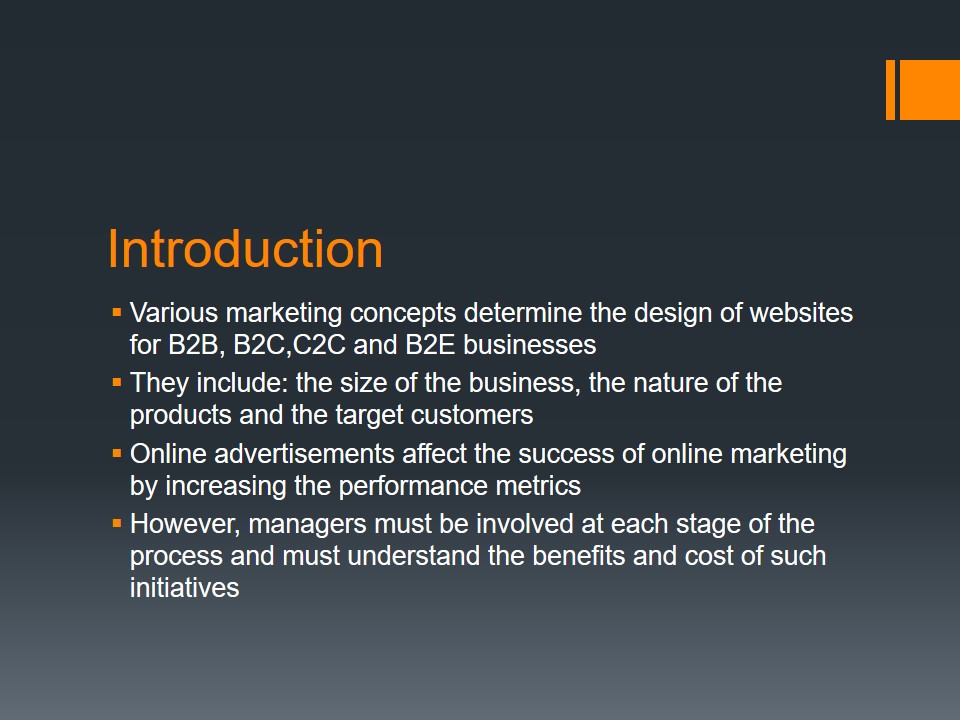
Research findings and analysis
- The web has provided the ultimate freedom of both choice and goods as opposed to traditional marketing.
- The process of online marketing faces little constrictions and monopolies.
- Online marketing has altered the notion that effective marketing often interrupts the lives of other people.
- Online marketers must constantly improve techniques and websites to improve their effectiveness.
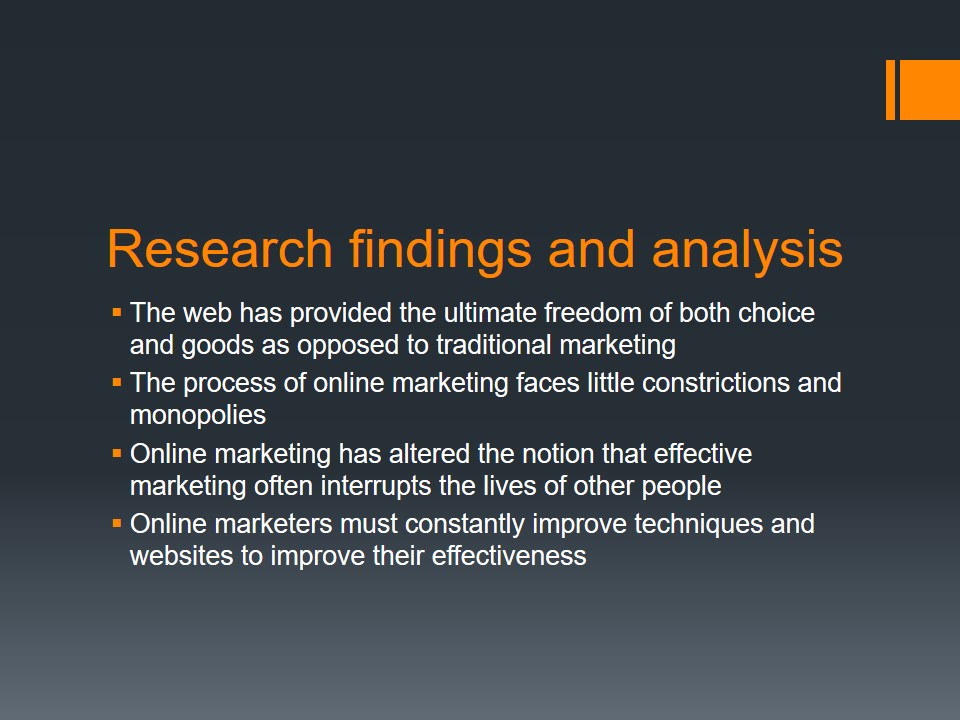
Advantages and disadvantages of online marketing
- Advantages:
- Relatively low cost;
- Convenient;
- Firms can collect useful information to enhance marketing initiatives.
- Disadvantages:
- Marketers are forced to design websites that are custom-made for mobile devices;
- Online marketing does not allow consumers to test products before making full purchases;
- Various security issues are related with online marketing.
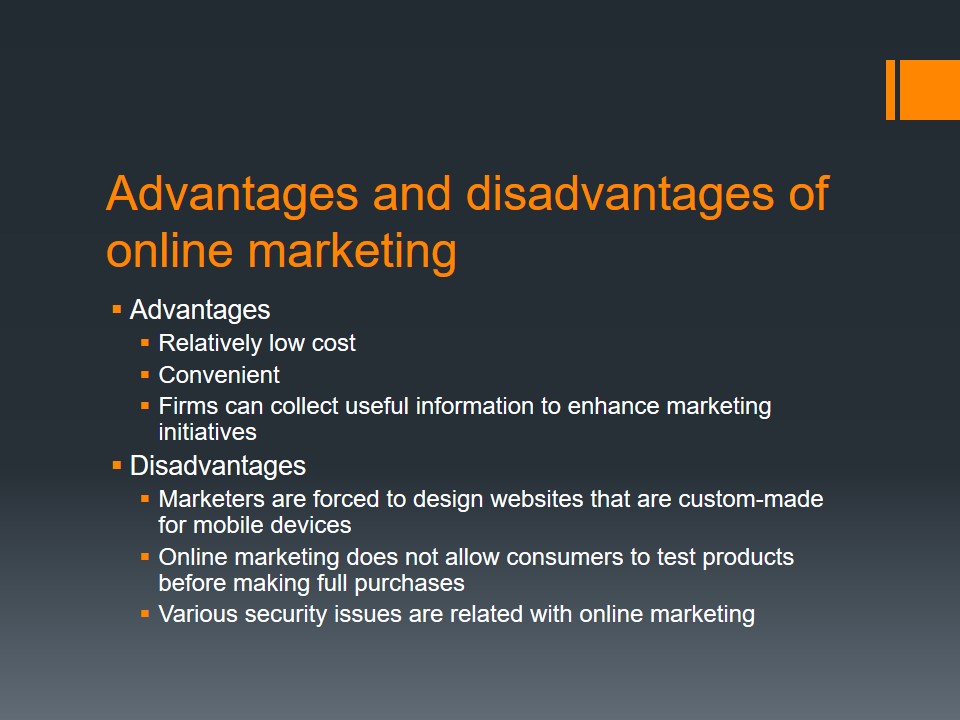
Different concepts of online marketing
- B2B marketing is the marketing of products and services to other business.
- The seven core components of a B2B website are: personalization, interactivity, informativeness, organization, privacy and security, entertainment, and accessibility.
- B2C marketing is the marketing of products and services directly to consumers.
- The goal of B2C marketing is to convert shoppers to marketers.
- B2C marketing employs merchandising activities.

Online advertising and its impacts on business
- The content of online advertisement contains the important elements that determine the effectiveness of the advert.
- An effective advert should increases the performance metrics of a business.
- Larger advertisements are more effective than smaller ones (Schumann and Thorson, 2007).
- New technologies such as Flash technologies increase the effectiveness of adverts.
- Advert positioning can enhance brand effectiveness.
- However, pop up advertisement over a webpage have reduced effectiveness.
- Advertisement exposure is important in determining the effectiveness of an advertisement.
- By monitoring web analytics, online advertisers can learn about the characteristics of persons accessing the page.
- Specialized sites collect user information than can be utilized by marketers.
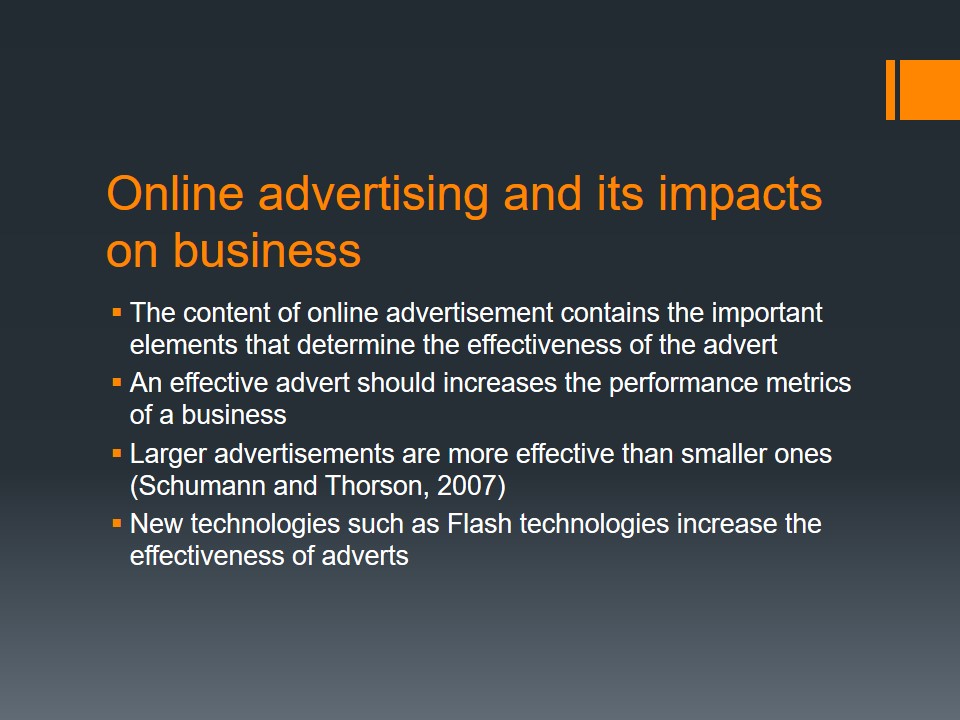

Tools used in online advertising
- Tools such as Google ad Planner helps with online advertisement placement by defining the audience by demographics and interests, and also finds sites frequently visited by the target audience.
- Companies such as AOL, MSN, Google, and Yahoo have developed various tools to assist online marketers.

Recommendations
- Firms wishing to engage in online sales must first select the mode through which it will develop a website for marketing.
- Retailing companies should adopt B2C marketing for online marketing.
- The company should also consider: the characteristic of the target audience, product factors, overall advertising objective, and forms of online adverts to be used.
- Cost and popularity must be considered when deciding on marketing tools.
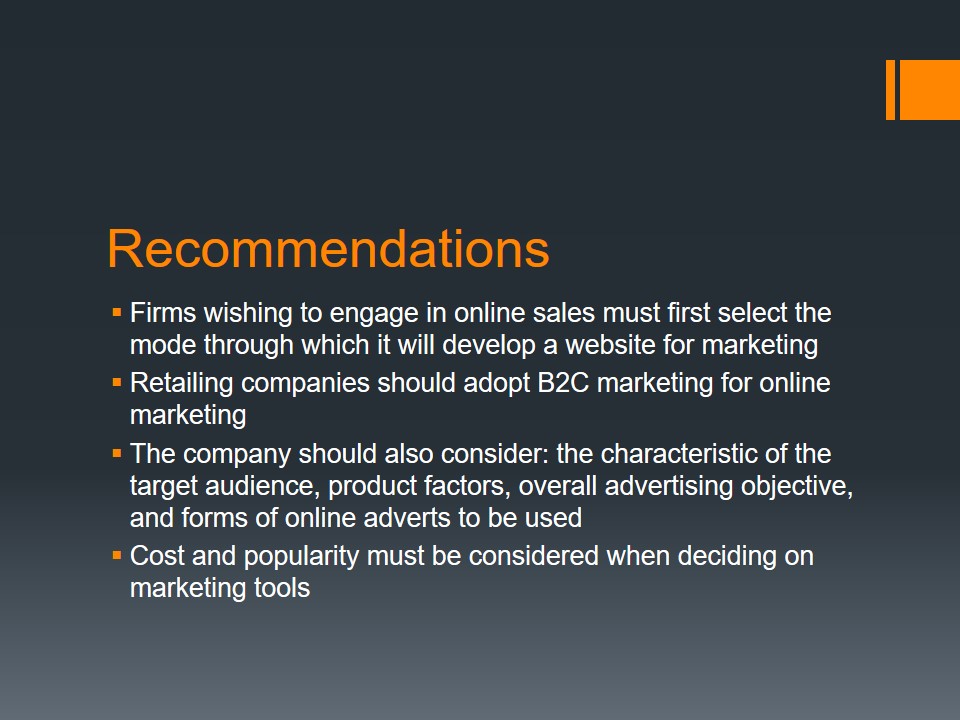
Conclusion
- The design of B2B and B2C websites is crucial in marketing.
- Online advertising allows various forms of advertising and marketing.
- Online advertising has revolutionized the advertising industry and widened companies’ consumer bases.
- Companies should emphasize on consumer interaction and enhance positive retail response to their products by creating a B2C website.
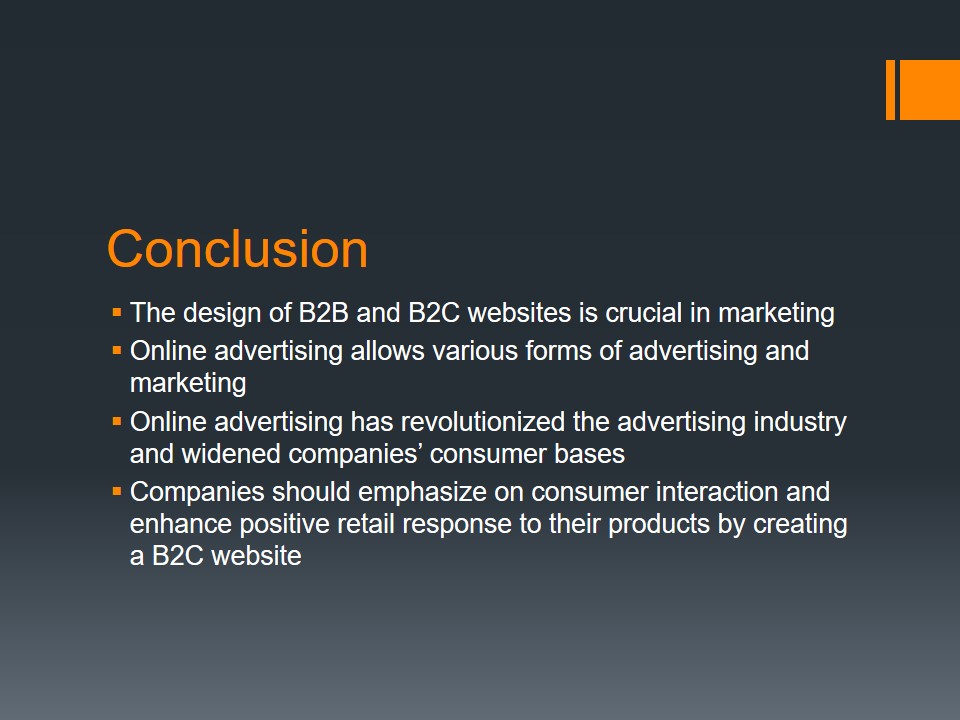
References
Schumann, D. W. & Thorson, E. (2007). Internet advertising: theory and research. Oxfordshire: Routledge.